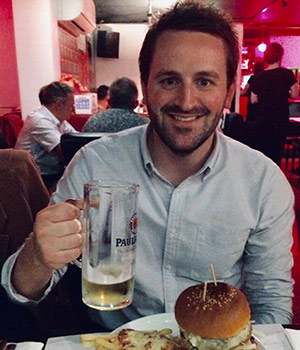5 Search Marketing Trends in 2019
Stay tuned. In the coming weeks and months, Space and Time’s in-house digital specialists will be sharing their thoughts on what is now, what is new and what is coming next in Digital Marketing for 2019. It’s sure to be an exciting year. To kick off, today we are sharing the top five trends to be aware of in 2019.
1. Breaking Through – Amazon Advertising
If you weren’t already familiar with Amazon’s advertising solutions then you should be, especially if you are an online retailer. Over half of all online consumers visit Amazon first when shopping online, but they are also using this marketplace for comparison with other websites. Simply put, as an e-commerce advertiser that isn’t currently on Amazon, you are missing out on potentially half of your target audience.
It’s a given that Google and Facebook are a large part of the staple diet for digital advertising budgets, but this is far from a static marketplace: it is predicted that the majority who are currently using Amazon Advertising will nearly double their year-on-year expenditure with the platform during 2019.
While it may take a long time to reach the heights of the aforementioned “duopoly”, this expected increase in Amazon’s search market share will not go unnoticed in the industry. Jumping on the train now will mean getting ahead of the competition before the penny drops and increased competition ensures a higher barrier to entry.
2. The Rise of Voice Search
Voice assistants are continuing to grow in popularity, with 14.4% of the UK population owning a smart speaker (eMarketer). With the rise of voice search, SEO specialists now need to optimise websites for natural speech.
On-page SEO traditionally uses keywords and related terms strategically placed within the website’s text i.e. at the beginning of the content, meta titles, headings and tags.
However, with the rise of voice search and considering Google’s use of Natural Language Processing techniques, SEO now needs to ensure that the relationship between the words provides users with answers. This can be achieved by incorporating questions into answers, guiding sentence clarity and considering appropriate responses to typical user queries such as “where is my closest…”
3. Expected Domination of Video
There are some heady expectations for where video, specifically YouTube, will sit in a marketer’s list of priority advertising channels in the coming months and years. What can’t be ignored is the sheer volume of content that is uploaded to it – no wonder Google is pushing video ads such as TrueView among advertisers and agencies alike. It makes sense because as users consume more content, so the advertising possibilities available also increase.
One interesting development in 2018 was the emergence of TrueView for Action. Regarding YouTube solely as a brand awareness channel (although it remains a very effective one) is now a thing of the past. Advertisers can now drive conversions through this platform using a wide range of targeting criteria and an improved ad unit. This includes the video itself in addition to companion banners that can be used to encourage a desired interaction, such as drive traffic to a website.
4. Optimising SEO for Local
More than a third of mobile searches contain a local intent, and with Google now indexing mobile first along with mobile search rising year-on-year, optimising SEO locally is a key to matching users’ queries.
We’ve previously discussed the importance of using Google My Business (GMB) to see success and we expect this to continue further into 2019. Ensuring good visibility within local searches and across all main maps will help guarantee success, and utilising all the features available within GMB will help advertisers to connect with potential customers in a variety of ways.
5. Attribution, Automation, Augmentation…?
Google has really upped the ante in the last 12 months or so with new product development, offering more automated bidding strategies and new dynamic and responsive ad formats across search campaigns. These work in conjunction with a non-first or non-last click attribution model, with the aim that machine learning can help provide more intuitive ad delivery and effective and accurate conversion results beyond what was previously possible.
While this may take an element of control away from the advertiser, it may be a case of “working smarter, not harder” with regards to forecasting, strategy and execution. Knowing that some of the elements of a campaign or an account are constantly being evaluated according to a business’s marketing objectives can surely only be a good thing in the grand scheme of things.
There it is, the top trends in search for 2019. We’ll be discussing all things digital over the coming months: from the digital journey to understanding the user, you can expect it all. And if you want to continue the discussion, please feel free to get in touch with our specialists.

